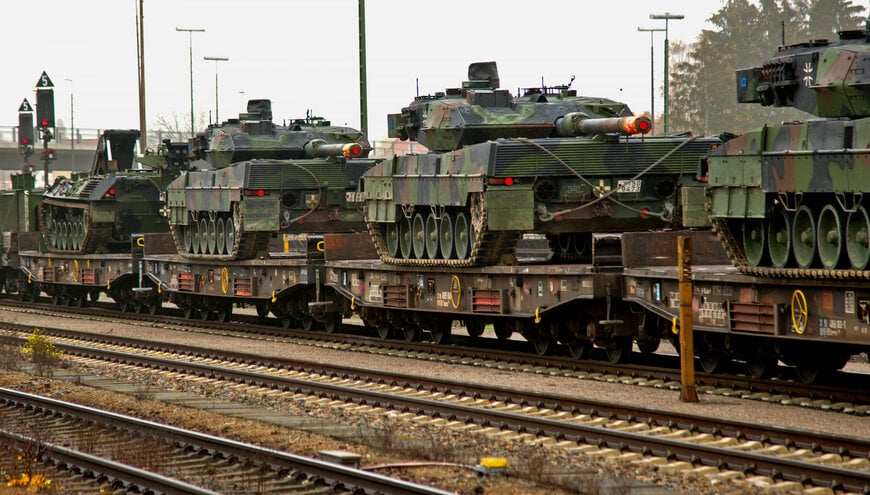Rail as a crucial enabler to ensure European security and defence
As central actors of military mobility, European railways have identified key recommendations for the EU's package of measures to enhance military movements across the continent.
www.cer.be

In a new paper published by the Community of European Railway and Infrastructure Companies (CER), railways assess infrastructure fitness, financing priorities, sufficiency of rolling-stock, potential for procedural streamlining, cyber-security, and adequacy of governance structures. A systemic approach to the railway system is essential to meet Europe's short-term military mobility needs while pursuing the long-term investments that will deliver maximum benefits for civilian and military users alike.
Rail plays and will continue to play a leading role in enabling swift military movements across Europe. The right conditions must be in place – physically and functionally – on the rail network to ensure smooth and resilient cross-border train operation. On the infrastructure side, Europe already has clear targets and specifications to meet for seamless connectivity under the Trans-European Network for Transport (TEN-T). The EU has identified 4 priority military mobility corridors and 500 critical hotspots needing upgrades to meet military standards. TEN-T parameters, except one, are consistent with military mobility needs but TEN-T implementation remains a work in progress.
Ambitious and predictable funding is needed to accelerate investments around the identified corridors and hotspots or, among others, to better integrate railways with EU ports, as they are critical nodes for military mobility. At the same time it is important to sustain ongoing transformations such as the rollout of the European Rail Traffic Management System (ERTMS) that strengthen the rail system as a whole.
There is an urgent need to replenish and modernise rolling stock for military mobility with EU financial support. Dual-mode (diesel-electric) locomotives and versatile wagon types (flatbed, low-bed, container, tank) that have dual civilian-military purpose should be central to the fleet, which could be managed through a pooled asset system, provided the overall stock is sufficient to meet both civilian and military needs.
Security and safety remain key. While enhanced digitalisation will help protect critical systems and streamline administrative and technical procedures, railways underline that increased attention must be given to the higher potential for cyber threats. Top areas for procedural improvement include customs and diplomatic clearances, coordination for exceptional convoys and transport of dangerous goods, while maintaining the highest of safety levels. The time and cost of rolling stock certification must also be reduced, which CER members propose to address through a range of possible measures outlined in the paper.
To guarantee swift mobilisation and responsiveness in times of crisis, effective civilian-military coordination, clear chains of command, and established procedures are essential, especially in the context of providing quick recovery and restoration of damaged assets. CER suggests 'readiness contracts' as part of broader framework contracts between railway companies and military services/public authorities, and stresses the importance of regular military drills and staff training in close coordination with civilian authorities.
Railways are committed to the joint effort towards defence readiness. In light of the ambition of establishing by the end of 2027 an EU-wide military mobility area, CER and its members are looking forward to the upcoming Military Mobility Package under preparation by the European Commission in the hope that it will decisively address the remaining infrastructure, capability and procedural obstacles that railway undertakings are currently facing.
CER Executive Director Alberto Mazzola said: "In order for railways to ensure swift services in times of crisis, there is a need for a systemic approach to the railway system, to overcome fragmentation. Many infrastructural improvements are already underway with the implementation of the TEN-T but increasing and accelerating investments is urgently needed, for example by leveraging security-related spending for critical infrastructure as part of defence investments. CER members underline the strong overlaps between civilian and military needs and the value of investing in a resilient rail network that delivers seamless services for all."
CER's full recommendations can be read in the position paper 'Dual-use, resilient and interconnected, cross-border Military Mobility on rail – readiness 2030 and beyond,' accessible on the CER website here.
www.cer.be

